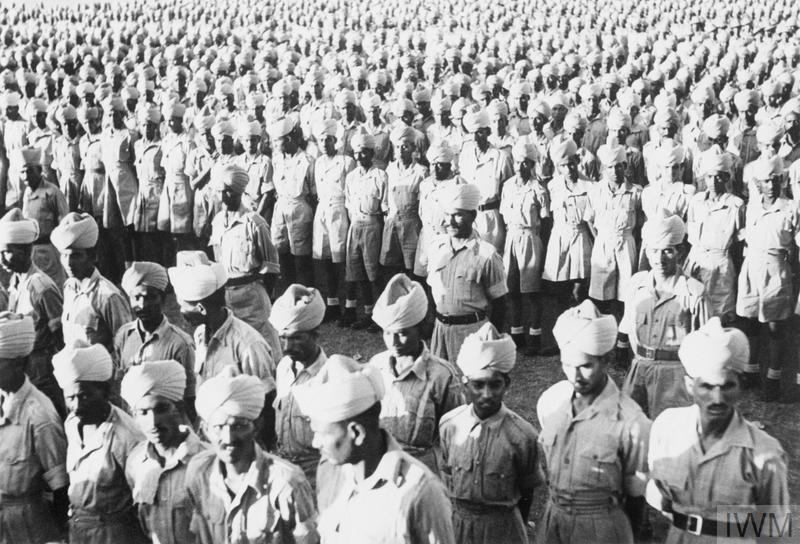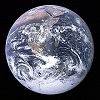11: Cold War and the Politics of Race- 1950-2000
- Page ID
- 147166
- Objective 1: Explore how questions about social justice, racial equality, and citizenship became international issues in the postwar era.
- Objective 2: Examine how the intersection of the Cold War and anti-colonial/imperialist struggles in Latin America, Africa, and Asia led to sustained international engagement
- What was the connection between racism and anti-communism in the US?
- How did the USSR articulate the relationship between socialism and decolonization?
Sidestepping Sanitized Narratives
Traditional textbooks depict the Cold War simply as an ideological struggle between freedom/democracy and authoritarian control/communism that started in 1945 and ended in 1989 with the victory of the United States. The bombing of Hiroshima and Nagasaki in 1945 demonstrated the decimating effects of nuclear warfare. That was terrifying. Although nuclear weapons still pose a serious threat to humanity, our fears have faded. Terms and phrases such as “proxy wars'' and “collateral damage” that are commonly used in history textbooks sanitize the bloody conflicts and human rights violations of the Cold War era. African and Asian anti-colonial movements were an important component in the war for global ideological supremacy. The photos of Indian and African troops, seen in Figures 11.1 and 11.2, serve as a reminder that colonial troops fought in every theater of World War II and contributed to the success of the Allied powers. Figure 11.1 is a black and white photograph of Indian Army recruits wearing turbans at a training center during World War II. Over 2.5 million troops from India fought for Britain in all theaters of war. This is certainly one of the lesser-known facts about World War II: India provided the largest number of volunteer troops in World War II. Indian Armed Forces received over fifteen percent of the Victoria Crosses. In addition massive quantities of weapons, timber, steel, and food were sent from India to Europe. India's contribution to British success was huge. Africans and Arabs also fought and died for the freedom of Allied Powers during World War II. Figure 11.2 is a black and white photograph of armed African troops who fought for the Allied Powers in Burma (Myanmar) against the Japanese during World War II. They were highly skilled jungle fighters who fought bravely during the heavy monsoons in Burma. Even though most global history textbooks don’t acknowledge the important contributions and sacrifices of these troops, their service in the imperial armies raised important questions about social justice and human equality in the postwar period. Anti-colonial movements in the postwar period challenged racial supremacy and colonial rule. Decolonization in Africa expedited the American civil rights movement. In Latin America the Cold War played out in the form of military dictatorships, widespread human rights violations, and the emergence of a variety of resistance movements. This chapter focuses on the intersection of anti-colonial/imperialist struggles, military dictatorship, and the Cold War that led to sustained engagement with the superpowers, who, in general, tended to support anti-democratic forces in Asia, Africa, and Latin America to advance their own geopolitical interests.
 Figure \(\PageIndex{1}\): Indian Army recruits during World War II, Imperial War Museums, in the Public Domain.
Figure \(\PageIndex{1}\): Indian Army recruits during World War II, Imperial War Museums, in the Public Domain.
 Figure \(\PageIndex{2}\): African troops in Burma (Myanmar) during World War II, Imperial War Museums, in the Public Domain.
Figure \(\PageIndex{2}\): African troops in Burma (Myanmar) during World War II, Imperial War Museums, in the Public Domain.The Soviet Union and the United States had fought as allies against Nazi Germany during World War II. But the alliance began to crumble as soon as the war in Europe ended in May 1945. The Soviet Union was determined to have a buffer zone between its borders and Western Europe. It set up pro-communist regimes in Poland, Hungary, Bulgaria, Czechoslovakia, Romania, Albania, and eventually in East Germany. Fears of Soviet expansion and aggression led the United States to launch a fervent anti-communism crusade until the collapse of the USSR in December 1991. Between 1945 and 1989 both superpowers pursued an ambitious grand strategy for international hegemony. The Cold War ended over three decades ago. We now have access to a vast body of historical scholarship that helps us better understand important global implications of the superpower struggle. Countries like Vietnam became bloody battlegrounds in the conflict between capitalism and communism. The case studies in this chapter are designed to show how the superpowers intervened in the internal affairs of several nations in Latin America, Africa, and Asia under the banner of promoting social justice, peace, or improving living conditions, and to emphasize that the US provided strong leadership for a global multiracial coalition against communism while simultaneously upholding white supremacy.
- 11.1: Geopolitical Strategies- USSR and US
- During the Cold War both the Soviet Union and the US tried to integrate newly decolonized nations into their spheres of influence and economic development through diplomatic missions, cultural initiatives, covert activities as well as outright military interventions in Asia and Africa.
- 11.2: Korean War- 1950-53
- The Korean War armistice (1953) established a new border between North and South Korea at the 38th parallel, which granted South Korea some additional territory and demilitarized the zone between the two nations.Technically, however, the war has never officially ended: both sides have simply remained in a tense state of truce since 1953.
- 11.3: Vietnam Conflict- 1955-75
- The USA used South Korea as its model for propping up a viable government in South Vietnam. However, there were some key advantages that were present in South Korea which South Vietnam did not have. The American government gave both countries billions of dollars in economic and military aid. However, this support did nothing to stem the tide of communism in South Vietnam.
- 11.4: Afghan-Soviet War- 1979-89
- Soviet invasion was met with widespread opposition from the Afghan people, who viewed it as an unwarranted act of aggression by a foreign power. Afghan resistance to Soviet occupation was fueled by a strong sense of nationalism, desire for self-determination, and anti-communism. The Soviets used brutal tactics and never won the support of the Afghan people. The Mujahideen gained support by positioning themselves as defenders of anti-communist Afghan sovereignty.
- 11.5: Civil War in El Salvador- 1979-92
- The Salvadoran civil war was one of the bloodiest wars of the twentieth century. It is estimated that over 75,000 people were killed in the war and over a million were displaced from a nation with a total population of approximately 5 million. The UN played an unprecedented and key role in El Salvador’s peace process.
- 11.6: Cuban Revolution- 1959
- While most Americans associate Fidel Castro with communism and dictatorship, many Blacks associate Castro with liberation citing Castro’s meeting with Malcolm X and granting political asylum to Assata Shakur as examples. Afro-Cubans are among the healthiest and longest living Blacks. Within the Black community globally, Castro’s contributions to anti-imperialist struggles are praised.
- 11.7: Argentina's "Dirty War"- 1976-83
- The “Dirty War” in Argentina was different from other conflicts and human rights abuses in several ways: the scale and intensity of human rights violations was particularly severe; the military targeted not only armed opposition groups but also civilians, including students and journalists; and the “Dirty War” left an indelible impression on Argentine society and politics.
- 11.8: Angolan Civil War- 1975-2002
- The Angolan crisis of 1974–1975 ultimately developed into a Cold War battleground as the superpowers and their allies delivered military assistance to their preferred clients. Starting in 1975, the three dominant liberation movements engaged in a struggle for power. This was the beginning of a bloody civil war that lasted until 2002
- 11.9: Chapter Summary and Key Terms
- During the Cold War both superpowers provisioned, supported, and sometimes even orchestrated and participated directly to advance their political and economic ideologies in smaller nations such as South Korea, Vietnam, Afghanistan, Angola. In countries such as Argentina and El Salvador, dictators or military juntas replaced democratically elected governments.
Thumbnail: "The Cold War," by Anupama Mande, licensed under CC BY.


